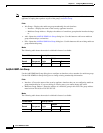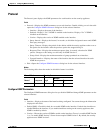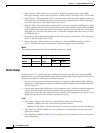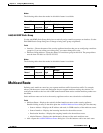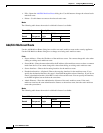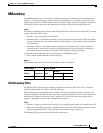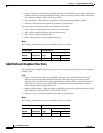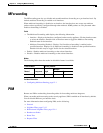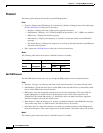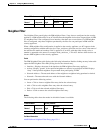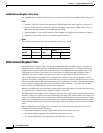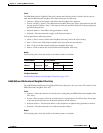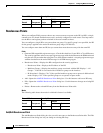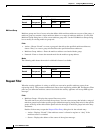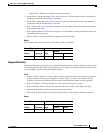
12-12
Cisco ASDM User Guide
OL-16647-01
Chapter 12 Configuring Multicast Routing
PIM
Protocol
The Protocol pane displays the interface-specific PIM properties.
Fields
• Protocol—Displays the PIM settings for each interface. Double-clicking an entry in the table opens
the Edit PIM Protocol dialog box for that entry.
–
Interface—Displays the name of the security appliance interfaces.
–
PIM Enabled—Displays “Yes” if PIM is enabled on the interface, “No” if PIM is not enabled.
–
DR Priority—Displays the interface priority.
–
Hello Interval—Displays the frequency, in seconds, at which the interface sends PIM hello
messages.
–
Join-Prune Interval—Displays the frequency, in seconds, at which the interface sends PIM join
and prune advertisements.
• Edit—Opens the Edit PIM Protocol dialog box for the selected entry.
Modes
The following table shows the modes in which this feature is available:
Edit PIM Protocol
The Edit PIM Protocol dialog box lets you change the PIM properties for the selected interface.
Fields
• Interface—Display only. Displays the name of the selected interface. You cannot edit this value.
• PIM Enabled—Check this check box to enable PIM on the selected interface. Uncheck this check
box to disable PIM on the selected interface.
• DR Priority—Sets the designated router priority for the selected interface. The router with the
highest DR priority on subnet becomes the designated router. Valid values range from 0 to
4294967294. The default DR priority is 1. Setting this value to 0 makes the security appliance
interface ineligible to become the default router.
• Hello Interval—Enter the frequency, in seconds, at which the interface sends PIM hello messages.
Valid values range from 1 to 3600 seconds. The default value is 30 seconds.
• Join-Prune Interval—Enter the frequency, in seconds, at which the interface sends PIM join and
prune advertisements. Valid values range from 10 to 600 seconds. The default value is 60 seconds.
Modes
The following table shows the modes in which this feature is available:
Firewall Mode Security Context
Routed Transparent Single
Multiple
Context System
• — • ——



